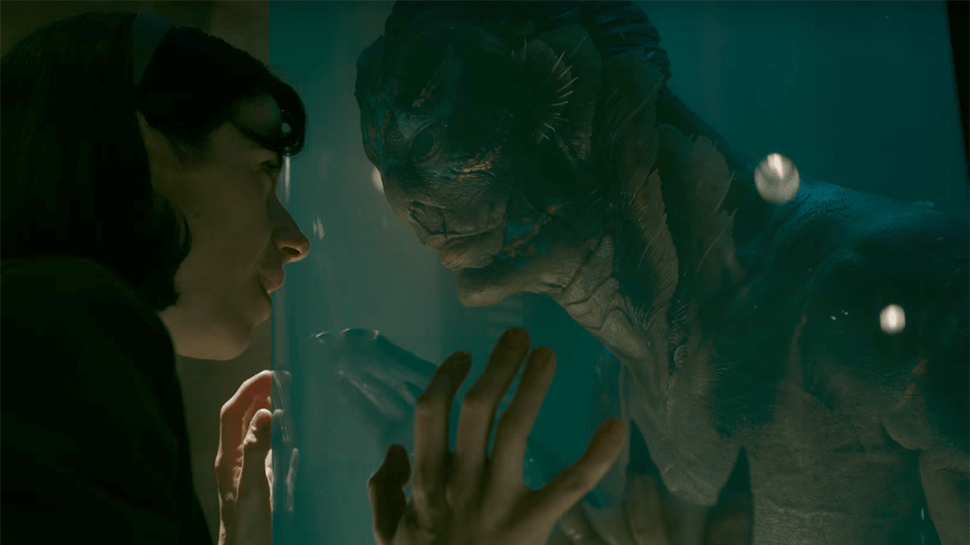Guillermo del Toro is that rare filmmaker for whom it is not an overstatement to say that there is nobody quite like him. Ruled by a combination of romanticized nostalgia and a love for the supernaturally macabre, del Toro has inspired emulators but has never been fully replicated, largely due to the auteur’s unique relationship with the monster films of his youth and the real human monsters he has come to know. This is a large part of why The Shape of Water feels like a film that could only ever come from del Toro, as its premise is a marriage of two classic genres that would come across as farcical from someone who wasn’t so personally invested in the material. The result is a film that is a quintessential encapsulation of its director’s ethos, a true rarity of cinema that could have come from no other source.
Set in the 1960s, mute janitor Elisa (Sally Hawkins) spends her days keeping her head down in the government research facility where she works with the much more verbose Zelda (Octavia Spencer). One day, a new specimen is brought into the facility, and Elisa becomes fascinated with the amphibious humanoid (Doug Jones). As the pair’s bond grows, Elisa come to realize that the supervisor of the facility (Michael Shannon) wants to dissect the creature for being an affront to nature, and so she becomes determined to save the fish-man from his captors. With the help of her best friend Giles (Richard Spencer), Elisa hatches a scheme to save this creature, but in the process she and the creature begin to form a bond that transcends anything Elisa has found with humans.
Yes, this is a film where the central premise is that a human woman finds love with a fish monster, emotionally and explicitly physically, and it is played completely straight-faced. It sounds too absurd to work, but del Toro is an expert in finding the humanity in the inhumane, so the fish-man is at once empathetic and relatable as a victim of circumstance, but he is also otherworldly in the urban environs he finds himself in, a fish out of water—sorry—whose animalistic tendencies can never quite be forgotten. The romance is believable, though, because Elisa is herself an outcast for her disability, and she realizes that her aquatic mate is the only one in this world who understands her wordlessly as not even her closest friends could.
The romance is backed up by a gorgeous backdrop of classically gothic set and costume design, emphasizing the story as a product of the era of del Toro’s cinematic fascinations. Cinema plays a major part in setting the stage for del Toro’s love story, ranging from the obvious inspiration of Creature from the Black Lagoon to the more subtle musical references that inform Elisa’s love of song and dance. But existing right out in front along with the cinematic inspirations are the cultural ones, as del Toro’s story is dripping with scorn for the white American middle class of the era that fulfilled their American dream by stepping on the backs of women, people of color, the disabled, and queer folks. Make no mistake, this is a film about outcasts finding their place in a world that would prefer them invisible, and it is not afraid to be blunt about it.
In fact, if there is one flaw in The Shape of Water, del Toro’s and Vanessa Taylor‘s screenplay can be a bit too blunt in revealing character prejudices, Michael Shannon’s character in particular verging a little too close to self-parody. Regardless, there is no love story out there quite like the one Guillermo del Toro has put together here. It is a gorgeous romance that harkens back to the informative years of del Toro’s life while viciously critiquing the culture that delivered his pop culture loves. In a year that has been largely informed by cinema taking the perspectives of outsiders and minorities, this is one of the best.













